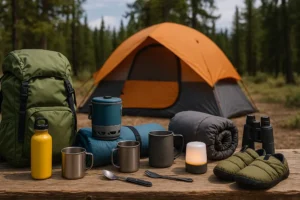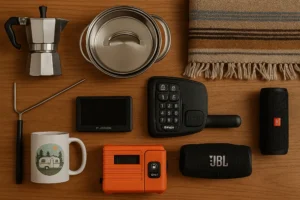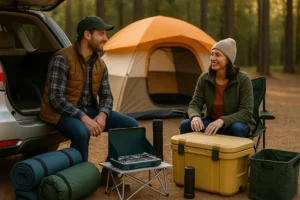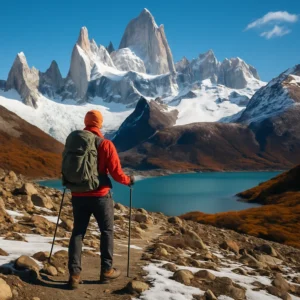If you’ve ever hit the trail unprepared, you know the feeling—legs burning halfway up, lungs gasping for air, and the nagging thought that maybe you bit off more than you could chew. That’s where a hiking training plan comes in. Whether you’re preparing for a weekend trek, a bucket-list multi-day adventure, or just want to enjoy your hikes without suffering, a structured plan is the difference between powering through or trudging in misery. Let’s build yours step by step.
Why a Hiking Training Plan Matters
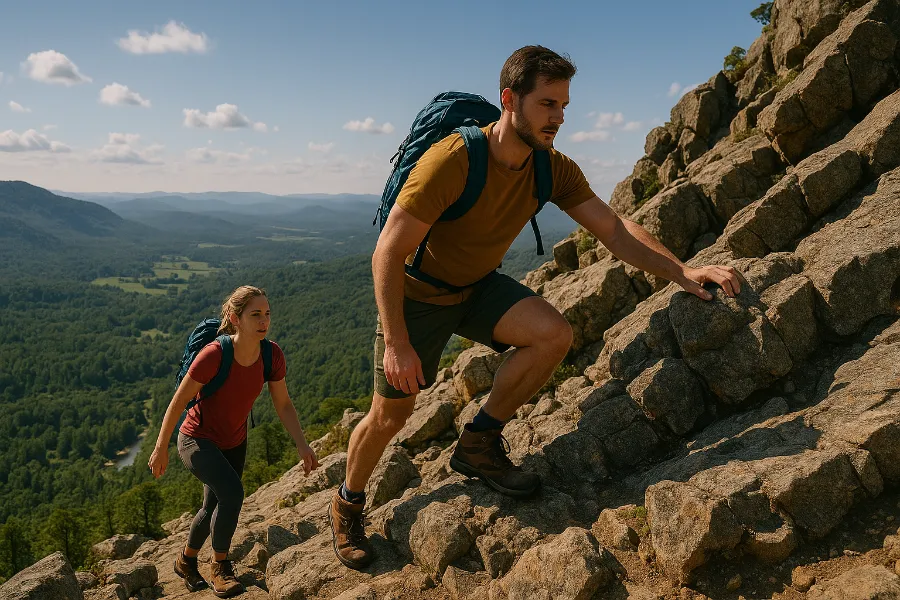
Hiking might seem simple—you walk, you climb, you enjoy nature. But it demands a unique mix of strength, endurance, and mental toughness. A training plan isn’t about becoming a super athlete; it’s about making your hike more enjoyable and safe.
The benefits are clear:
- Physical readiness: Your legs, core, and lungs will handle long climbs without giving out.
- Injury prevention: Strong muscles protect joints and ligaments from the constant stress of uneven terrain.
- Mental confidence: You’ll approach your hike knowing you can handle it, instead of questioning every steep section.
Assessing Your Upcoming Hike
Before you dive into training, consider the specifics of your hike. Not all trails are equal.
- Distance: A flat two-mile loop isn’t the same as a steep two-mile climb.
- Elevation: Big elevation gains require stronger legs and greater lung capacity.
- Terrain: Rocky scrambles, sandy paths, or forest trails all challenge your body differently.
- Altitude: At higher elevations, oxygen levels drop. Even fit hikers can feel winded.
Take these factors into account so your hiking training plan matches the trail ahead.
Core Components of a Hiking Training Plan
A solid plan balances four key areas: strength, endurance, mobility, and recovery. Skipping one means you’re leaving gaps that could trip you up—literally.
Strength Training
Hiking is powered by your legs, supported by your core, and stabilized by your hips and shoulders. Strength work builds durability for long days under load.
Key areas to train:
- Legs: Quads, hamstrings, glutes, calves
- Core: Abs, obliques, lower back
- Upper body: Shoulders and back for pack carrying
- Stabilizers: Hips and smaller muscles that protect knees and ankles
Endurance and Cardio
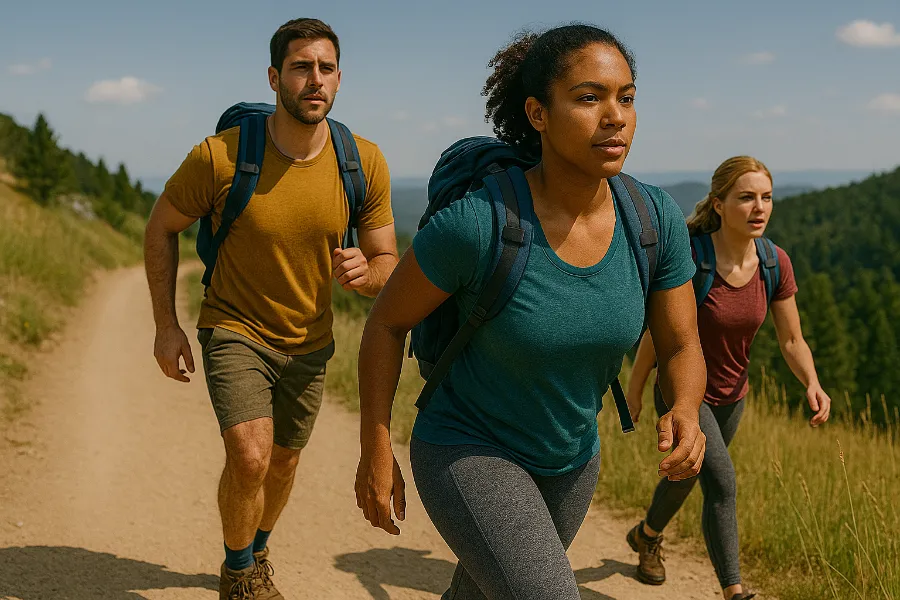
Strength alone won’t get you to the summit. You need stamina to go for hours on end. Hiking mostly uses aerobic energy, so you’ll want long-duration cardio sessions mixed with some higher-intensity work.
Activities to include:
- Hiking with a weighted pack
- Stair climbs or hill repeats
- Trail running, cycling, or swimming
- Interval training for bursts of power
Flexibility, Mobility, and Balance
Mobility work keeps your joints happy and ready for uneven ground. Balance training sharpens stability so you don’t roll an ankle on loose rocks. A little yoga or mobility-focused stretching can go a long way.
Rest and Recovery
It’s tempting to push hard every day, but recovery is part of training. Muscles grow stronger when they rest. Build in at least one full rest day per week and listen to your body.
Example 8-Week Hiking Training Plan
Here’s a simple, progressive schedule to get you ready for a challenging hike:
In Weeks 1–4: Build the base
- 2 strength training days (legs + core focus)
- 2 cardio sessions (30–45 minutes, moderate pace)
- 1 long hike or weighted walk (start with 60 minutes)
- 2 rest or mobility days
Weeks 5–6: Increase intensity
- 2 strength sessions (add weight or volume)
- 2 cardio sessions (mix in intervals)
- 2 long hikes or stair climbs with a pack
- 1 rest day
Weeks 7–8: Peak and taper
- Swap cardio sessions for longer hikes
- Add pack weight to simulate your trip load
- Two weeks before: focus on hikes over gym sessions
- Final week: taper down so you’re fresh on hike day
Key Hiking-Specific Exercises
Forget endless bicep curls—your training should mimic the demands of hiking. Here are some of the best moves to slot into your plan:
- Squats and lunges: Build quad and glute power for uphill climbs.
- Step-ups: Simulate stepping onto rocks and ledges.
- Heel-downs: Strengthen quads for controlled descents.
- Planks and bridges: Build a rock-solid core.
- Bent-over rows and shoulder presses: Prep your back and shoulders for pack carrying.
- Single-leg balance drills: Improve stability on uneven terrain.
Aim for 2–3 sets of each, 10–15 reps, adjusting difficulty as you progress.
Nutrition and Hydration for Training and Hiking
Your hiking training plan isn’t just about workouts. Fuel matters.
- Before the hike: Start upping water and electrolytes one to three days ahead. Add extra carbs to top off energy stores.
- During the hike: Eat and drink regularly. Don’t wait until you’re starving or parched—by then it’s too late. Quick snacks like trail mix, dried fruit, or energy balls are ideal.
- After training: Focus on protein for muscle repair and carbs to replenish glycogen.
Tips for High-Elevation Hikes
If your trail takes you above 8,000 feet, you need to prepare differently:
- Train with nose-only breathing during hikes or walks to mimic altitude stress.
- Spend time at elevation if possible before your trip.
- Hydrate more than usual—dry mountain air dehydrates quickly.
- Descend immediately if you feel symptoms of altitude sickness.
Mental Preparation for the Trail
Physical training builds your body, but mental resilience keeps you moving when things get tough. Hiking can be a test of patience, grit, and focus.
Ways to build mental toughness:
- Do challenging workouts that push your comfort zone.
- Practice mindfulness or breathwork to stay calm under stress.
- Reframe discomfort as part of the adventure—it’s what makes the summit satisfying.
Creating Your Personalized Hiking Training Plan
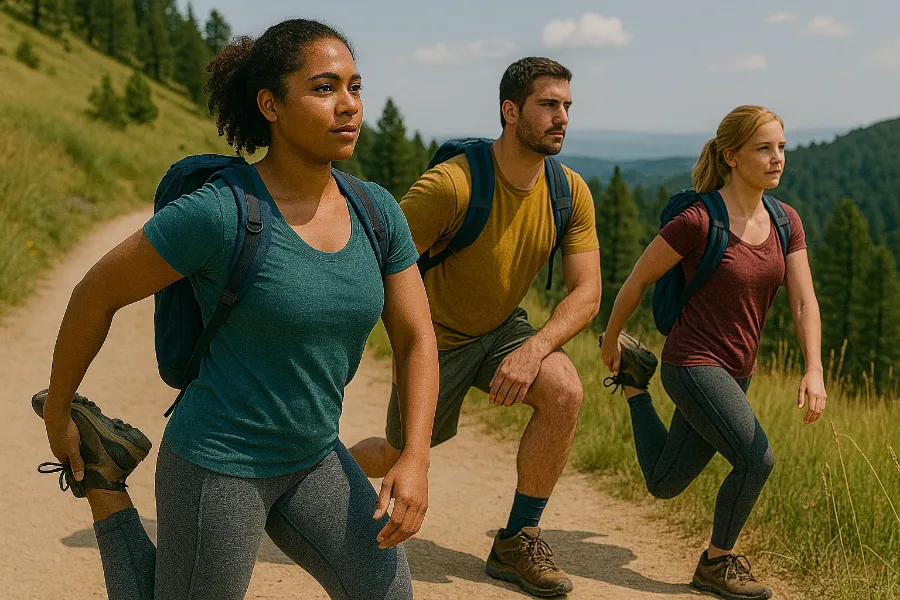
Not every hiker has the same goals or fitness level. Customize your plan by asking yourself:
- How much time do I realistically have to train each week?
- What type of terrain will I face?
- What are my weak points—endurance, strength, or balance?
Start small and build gradually. Consistency beats intensity. Even three solid sessions a week will make a huge difference over time.
Conclusion: Bring It All Together
A hiking training plan is your secret weapon for making the outdoors more enjoyable. By blending strength, endurance, mobility, and recovery, you’ll prepare your body for the challenges of the trail while reducing your risk of injury. Add in smart nutrition and a dose of mental grit, and you’ll be ready for anything from a half-day hike to a multi-day adventure.
The trail will always test you—but with the right plan, you’ll rise to the challenge and savor every step.




